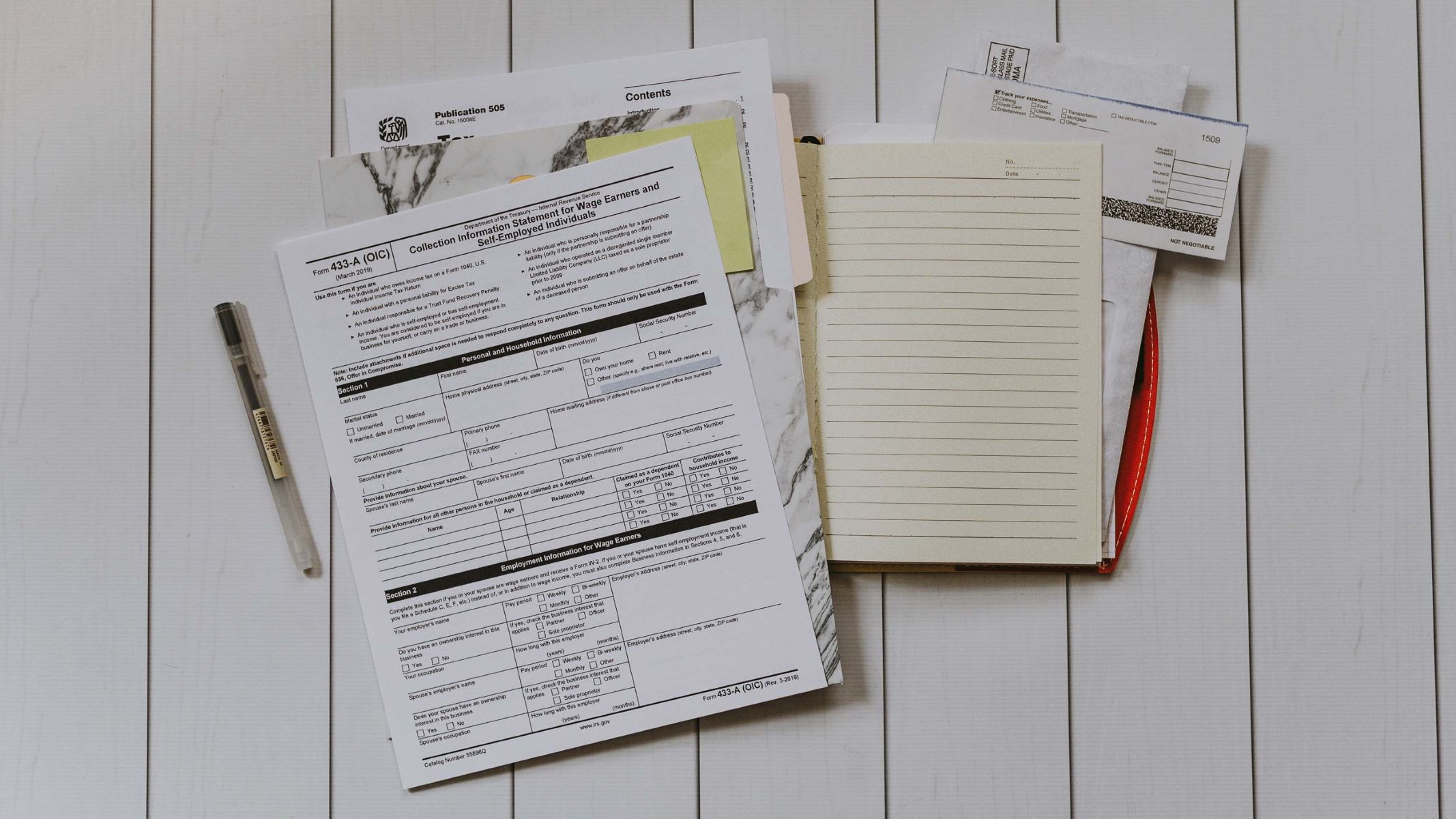

Finance
How Does Shipping Insurance Work?
Published: November 18, 2023
Learn how shipping insurance works and why it's important for your finances. Protect your packages and budget with comprehensive shipping insurance coverage.
(Many of the links in this article redirect to a specific reviewed product. Your purchase of these products through affiliate links helps to generate commission for LiveWell, at no extra cost. Learn more)
Table of Contents
- Introduction
- What is shipping insurance?
- Why do you need shipping insurance?
- How does shipping insurance work?
- Different types of shipping insurance
- How to purchase shipping insurance
- Factors to consider before buying shipping insurance
- What does shipping insurance cover?
- What is not covered by shipping insurance?
- How to handle a shipping insurance claim
- Tips for shipping valuable or fragile items
- Conclusion
Introduction
When it comes to shipping valuable or fragile items, there’s always a risk of damage, loss, or theft. That’s where shipping insurance comes into play. Shipping insurance provides protection and peace of mind to both the sender and the recipient, ensuring that in the event of any unfortunate incidents during transit, the value of the goods is covered.
Shipping insurance works as a safeguard against potential financial losses. By paying a relatively small fee, you can protect your valuable items, whether it’s an expensive piece of jewelry, electronic equipment, or delicate artwork. In this article, we will delve into the world of shipping insurance, exploring what it is, why it is necessary, how it works, and everything you need to know to make an informed decision when sending or receiving high-value items.
Whether you are a business owner shipping products to customers or an individual sending a gift to a loved one, understanding shipping insurance is crucial. It not only provides financial protection but also ensures that you can confidently ship valuable items without worrying about what could go wrong.
In the next sections, we will discuss the various types of shipping insurance available, how to purchase it, what it covers, what is not covered, and how to handle a shipping insurance claim. We will also offer some valuable tips on how to ship valuable or fragile items securely. By the end of this article, you will have a comprehensive understanding of shipping insurance and be ready to make informed decisions when it comes to protecting your shipments.
What is shipping insurance?
Shipping insurance, also known as cargo insurance or freight insurance, is a type of insurance that provides coverage for goods during transportation. It offers financial protection in the event of damage, loss, or theft that may occur during the shipping process. Whether shipping domestically or internationally, having insurance can help mitigate the risks involved in moving valuable or fragile items from one location to another.
Shipping insurance is typically offered by shipping carriers or third-party insurance providers. It acts as a contract between the insured and the insurer, specifying the coverage limits, terms, and conditions. The cost of shipping insurance is usually based on the declared value of the goods being shipped.
When shipping items, it’s important to note that carriers have limited liability. This means that their liability for lost or damaged goods is capped at a certain amount per pound or per shipment. However, the actual value of your goods may far exceed this limit, making shipping insurance essential for full coverage.
It’s vital to understand that shipping insurance is different from shipping fees or customs fees. Shipping fees cover the cost of transportation, while customs fees are charges imposed by customs authorities for clearing goods through customs. Shipping insurance solely focuses on protecting the value of the items being shipped.
Having shipping insurance gives both the sender and the recipient peace of mind. For the sender, it ensures that the value of the goods is protected in case of any unforeseen events during transit. For the recipient, it assures them that they can receive compensation if the shipped items are damaged or lost.
Whether you are shipping high-value merchandise for your business or sending a sentimental item to a loved one, shipping insurance is a valuable investment. It acts as a safety net, providing financial protection and minimizing the potential risks associated with shipping goods.
Why do you need shipping insurance?
Shipping insurance is crucial for anyone involved in the shipping of valuable or fragile items. Here are some key reasons why you need shipping insurance:
- Protection against damage or loss: Accidents happen, and despite taking precautions, there is always a risk of damage or loss during transit. Shipping insurance provides financial protection in case your items are damaged, stolen, or lost.
- Peace of mind: Shipping valuable items can be stressful, especially if they hold sentimental or monetary value. Having insurance in place allows you to ship with confidence, knowing that you are covered in the event of unforeseen circumstances.
- Added security for high-value items: If you are shipping expensive jewelry, artwork, electronics, or other high-value items, shipping insurance is essential. It provides an extra layer of security and ensures that you are protected financially if anything goes wrong.
- Protection against carrier liability limitations: Carriers often have limited liability for lost or damaged goods, which may not fully cover the value of your items. Shipping insurance fills this gap, providing coverage that exceeds the carrier’s liability limits.
- International shipping protection: When shipping internationally, there are additional risks involved, such as customs delays, customs clearance issues, or theft. Shipping insurance covers these risks and ensures that you are protected throughout the international shipping process.
It’s important to assess the value, fragility, and importance of your items when considering shipping insurance. Even if you trust the shipping carrier or have never experienced any problems before, accidents or unforeseen events can occur. Having insurance in place gives you the peace of mind and financial protection you need.
Whether you are a business owner shipping products to customers or an individual sending a personal item, shipping insurance is an investment worth making. It offers the reassurance and security necessary to navigate the complex world of shipping and ensures that you are adequately covered in case of any mishaps along the way.
How does shipping insurance work?
Shipping insurance operates on the principle of providing financial protection for goods in transit. Here’s a breakdown of how shipping insurance works:
1. Declaring the value: When shipping an item, you need to declare its value to determine the insurance coverage. The value should reflect the actual worth of the item, including any applicable taxes or fees.
2. Choosing a coverage level: Most shipping insurance providers offer different coverage levels, allowing you to select the level of protection based on the value of your goods. The coverage level determines the maximum amount of compensation you will receive if a claim is approved.
3. Paying the insurance premium: Once you declare the value and select the coverage level, you will need to pay the insurance premium. The cost is typically based on a percentage of the declared value of the goods being shipped.
4. Insuring against loss or damage: Shipping insurance covers various risks, including theft, damage, loss, and even natural disasters. If any of these events occur during transit, and the proper documentation and evidence are provided, you can file a claim with the insurance provider.
5. Filing a claim: In the unfortunate event that your shipment is damaged, lost, or stolen, you need to initiate a claims process. This typically involves providing documentation such as proof of value, shipping receipts, photos of the damaged item, and any other relevant information requested by the insurance provider.
6. Claims assessment and resolution: Once the claim is submitted, the insurance provider will assess the claim and determine its validity. This process may involve an investigation and verification of the documentation provided. If the claim is approved, you will receive compensation up to the coverage limit specified in your policy.
It’s important to note that each insurance provider may have slightly different procedures and requirements for filing and processing claims. It’s essential to familiarize yourself with the specific guidelines of your chosen insurance provider to ensure a smooth claims experience.
Shipping insurance offers peace of mind and financial protection, allowing you to ship valuable or fragile items with confidence. By understanding how shipping insurance works and following the proper procedures in case of a claim, you can navigate the shipping process smoothly and secure your shipments against unforeseen events.
Different types of shipping insurance
When it comes to shipping insurance, there are several types available to cater to different needs and circumstances. Understanding the various options will help you choose the right type of insurance for your shipments. Here are the different types of shipping insurance:
- Full coverage insurance: This type of insurance provides comprehensive coverage against loss, damage, or theft of your goods during transit. It offers the highest level of protection and is ideal for shipping high-value or delicate items.
- Declared value coverage: With declared value coverage, you specify the value of your shipment, and the insurance coverage is based on that declared value. This type of insurance is commonly used when shipping items with a high value or unique characteristics.
- Third-party insurance: Instead of relying on the shipping carrier’s insurance, you have the option to purchase insurance from a third-party provider. Third-party insurance offers flexibility and often provides more extensive coverage options.
- International shipping insurance: When shipping internationally, there are additional risks involved, such as customs delays, duties, or regulatory issues. International shipping insurance provides coverage for these specific risks, ensuring that you are protected throughout the international shipping process.
- Fragile item insurance: Fragile item insurance is designed specifically for shipping delicate or fragile items, such as glassware, artwork, or antiques. This type of insurance focuses on providing coverage against damages caused by mishandling or accidents during transit.
- Domestic shipping insurance: Domestic shipping insurance covers shipments within a country’s borders. It provides protection against loss, damage, or theft during domestic transportation.
- Excess valuation coverage: Excess valuation coverage allows you to increase the carrier’s liability beyond their standard limits. This type of insurance is useful when the value of your goods exceeds the carrier’s maximum liability.
It’s important to carefully evaluate your shipping needs and the value of your goods when selecting the appropriate type of shipping insurance. Consider factors such as the nature of your items, their value, and the level of risk associated with the shipping route. By choosing the right type of insurance, you can ensure that your shipments are adequately protected.
It’s worth noting that the availability of specific types of shipping insurance may vary depending on the insurance provider or the shipping carrier you choose. It’s recommended to inquire about the available options and coverage details when purchasing shipping insurance.
How to purchase shipping insurance
Purchasing shipping insurance is a straightforward process that can be done in a few simple steps. Here’s a guide on how to purchase shipping insurance:
- Research insurance providers: Start by researching insurance providers that offer shipping insurance. Look for reputable companies that have experience in the industry and positive customer reviews. Compare their coverage options, prices, and customer support services.
- Get quotes: Contact the insurance providers and request quotes based on the specifics of your shipment. Provide details such as the value of the goods, destination, shipping method, and any special requirements. This will help you get accurate pricing information.
- Compare coverage and prices: Review the quotes and compare the coverage options and prices. Consider factors like the coverage limits, deductibles, exclusions, and additional services offered. Choose an insurance provider that offers the best combination of coverage and pricing for your specific needs.
- Fill out the necessary forms: Once you have selected an insurance provider, you will need to fill out the necessary forms to apply for insurance. These forms typically require information about the shipment, such as the value, description of goods, and shipping details.
- Pay the premium: After filling out the forms, you will be required to pay the insurance premium. The cost of the premium is typically calculated based on the value of the goods being shipped. Make the payment as per the instructions provided by the insurance provider.
- Receive the insurance policy: Once the payment is processed, you will receive the insurance policy or certificate. This document details the terms and conditions of the insurance coverage, including the coverage limits, exclusions, and claim procedures. Keep this document in a safe place for future reference.
- Notify the shipping carrier: Inform the shipping carrier that you have purchased shipping insurance for your shipment. Provide them with the necessary details, such as the insurance policy number and any specific instructions they may require. This ensures that they are aware of the insurance coverage and can assist you during the shipping process.
Remember, it’s essential to purchase shipping insurance before your shipment is in transit. Once your items are already in transit or have been delivered, it may be too late to obtain insurance coverage for that specific shipment.
By following these steps, you can easily purchase shipping insurance and have the peace of mind knowing that your valuable items are protected during transit.
Factors to consider before buying shipping insurance
Before purchasing shipping insurance, it’s important to consider several factors to ensure that you make the right decision for your specific needs. Here are some key factors to consider:
- Value of the goods: Assess the value of the goods you are shipping. Make sure the insurance coverage you choose adequately reflects the value of the items to ensure you are adequately compensated in case of loss or damage.
- Type of items: Consider the nature of the items you are shipping. If you are shipping fragile or high-value items, you may want to look for specialized insurance that specifically covers those types of items and provides additional protection.
- Shipping route and distance: Evaluate the shipping route and the distance the goods have to travel. International shipments may require different coverage due to additional risks such as customs delays or regulatory issues. Consider the potential challenges and choose insurance that covers those specific risks.
- Pricing and coverage options: Compare the prices and coverage options offered by different insurance providers. Look for a balance between affordable premiums and comprehensive coverage that suits your specific shipping needs.
- Exclusions and limitations: Read the policy carefully and understand the exclusions and limitations of the insurance coverage. Some policies may have restrictions on certain items, specific causes of loss, or coverage limits. Ensure that the policy aligns with your requirements and there are no surprises later on.
- Claims process: Familiarize yourself with the claims process of the insurance provider. Understand the necessary documentation, timeframes for filing a claim, and the procedures involved. A smooth claims process can make a significant difference if you need to make a claim in the future.
- Insurance provider’s reputation: Research the reputation and customer service record of the insurance provider. Look for customer reviews and ratings to assess their reliability and responsiveness. Choose a reputable insurance provider with a track record of providing excellent service and timely claims resolution.
- Carrier liability limitations: Understand the liability limits of the shipping carrier. This will help you determine whether additional insurance coverage is necessary to cover the gap between the carrier’s liability and the actual value of your goods.
Considering these factors will help you make an informed decision when purchasing shipping insurance. It’s important to carefully evaluate your specific shipping needs and choose insurance coverage that provides the necessary protection and peace of mind.
What does shipping insurance cover?
Shipping insurance provides coverage for various risks that may occur during the shipping process. While the specific coverage details can vary depending on the insurance provider and policy, here are some common scenarios that shipping insurance typically covers:
- Damage: Shipping insurance covers damage to your items caused by accidents, mishandling, or any other unforeseen events during transit. This includes impact damage, water damage, and breakage.
- Loss: If your shipment goes missing and cannot be located, shipping insurance can provide coverage. This includes theft, misplacement, or loss during transit.
- Theft: If your shipment is stolen during transit, shipping insurance will offer coverage for the value of the stolen items.
- Natural disasters: Shipping insurance typically covers damages caused by natural disasters such as floods, earthquakes, hurricanes, or other extreme weather conditions.
- Customs seizures: In the event that your shipment is seized by customs authorities due to regulatory issues, shipping insurance can provide coverage for the seized items.
- Third-party actions: If a third party causes damage or loss to your shipment, such as during handling or transport by a subcontracted service, shipping insurance can provide coverage for the incurred losses.
- Hidden damage: Shipping insurance may cover damage that is not immediately apparent upon delivery, known as hidden damage. This includes internal damage or damage that becomes apparent after unpacking the items.
- Partial damage: If only a portion of your shipment is damaged, shipping insurance can provide coverage for the damaged portion, ensuring you are compensated accordingly.
- Accidental breakage: Shipping insurance often covers accidental breakage of fragile items, such as glassware, ceramics, or electronics, that occur during transit.
It’s important to carefully review the terms and conditions of your shipping insurance policy to understand the specific coverage limits, exclusions, and deductibles. Additionally, some insurance providers may have additional add-ons or coverage options that you can consider to further protect your valuable shipments.
Remember to document any damages or issues with your shipment upon delivery and notify both the insurance provider and the shipping carrier as soon as possible to initiate the claims process.
What is not covered by shipping insurance?
While shipping insurance provides coverage for a wide range of risks, there are certain situations and items that are typically not covered. It’s important to be aware of these exclusions when purchasing shipping insurance. Here are some common things that are often not covered by shipping insurance:
- Inadequate packaging: If your items were not properly packaged according to the carrier’s guidelines or industry standards, resulting in damage, the insurance may not cover it. It’s important to follow the packaging instructions provided by the carrier and ensure that your items are well-protected.
- Pre-existing damage: Shipping insurance typically does not cover damage that existed before the shipment was sent. It’s essential to document and inspect your items before shipping to avoid any confusion regarding the condition of the goods.
- Loss or damage due to improper handling: If the loss or damage to your shipment is a result of mishandling by the sender, recipient, or any third party not related to the shipping process, it may not be covered by insurance. It’s important to ensure proper handling and care throughout the shipping process.
- Prohibited items: Shipping insurance generally does not cover items that are prohibited or restricted by law, such as illegal substances, firearms, hazardous materials, or perishable goods. Check with the insurance provider for a list of prohibited items.
- Loss or damage due to delay: Shipping insurance typically covers loss, damage, or theft during transit but does not provide coverage for financial losses or damages resulting from delayed delivery.
- Consequential losses: Shipping insurance is designed to cover the value of the goods being shipped, but it usually does not cover any consequential losses, such as lost sales, lost profits, or business interruption.
- Intentional acts or dishonesty: If the loss or damage to your shipment is a result of intentional acts, dishonesty, or fraudulent activities, it may not be covered by insurance.
- Items of high value or collectibles: Some shipping insurance policies have limits on the coverage for high-value items or collectibles, such as valuable artwork, jewelry, or antiques. It’s important to review the policy details and consider additional specialized insurance for such items if needed.
These exclusions may vary depending on the insurance provider and policy terms, so it’s crucial to carefully review the policy documentation and clarify any uncertainties before purchasing shipping insurance. If you have specific items that may have unique requirements or value, consider discussing them with the insurance provider to ensure adequate coverage.
Lastly, it’s worth noting that insurance providers may have additional add-on services or coverage options available to address specific needs or provide extra protection for excluded items or risks. Consider exploring these options if necessary.
How to handle a shipping insurance claim
In the unfortunate event that your shipment is damaged, lost, or stolen, you may need to file a shipping insurance claim to seek compensation for the incurred losses. Here’s a step-by-step guide on how to handle a shipping insurance claim:
- Assess the damage: Before accepting the delivery of your shipment, carefully inspect the package for any visible signs of damage. If there is damage, make note of it on the delivery receipt or any other documentation provided by the carrier. If the damage is concealed or discovered after opening the package, take clear and detailed photographs of the damage.
- Notify the insurance provider: Contact your insurance provider as soon as possible to report the damage or loss. Provide them with all the necessary details, including the policy number, shipment details, description of the damage or loss, and any supporting documentation or photographs.
- Retain evidence: Keep all relevant documents related to the shipment, such as shipping receipts, invoices, packaging materials, and photographs of the damaged items. These will serve as evidence during the claims process.
- Complete the claim form: The insurance provider will provide you with a claim form to complete. Fill out the form accurately and thoroughly, providing all the required information and supporting documentation. Be detailed in explaining the nature of the damage or loss.
- Submit the claim: Submit the completed claim form along with all supporting documents to the insurance provider within the specified timeframe. Ensure that you meet all the deadlines and requirements outlined by the insurance provider to avoid any delays or potential claim denials.
- Cooperate with the investigation: The insurance provider may conduct an investigation to assess the validity of the claim. Cooperate fully by providing any additional requested information, documentation, or any other assistance required to process the claim.
- Claims assessment and resolution: The insurance provider will evaluate the claim and make a decision regarding compensation. This process may take some time, depending on the complexity of the claim and the insurance provider’s procedures. If the claim is approved, you will receive compensation up to the coverage limit specified in your policy.
- Review the decision: Take some time to review the decision and ensure that you are satisfied with the compensation offered. If there are any discrepancies or you feel that the compensation does not adequately cover your losses, discuss it with the insurance provider and seek clarification.
- Appeal if necessary: If you are dissatisfied with the decision or believe that the claim was wrongfully denied, review the insurance provider’s appeal process and consider submitting an appeal. Follow their guidelines and provide any additional evidence or information that supports your claim.
- Close the claim: Once the claim process is complete, whether it’s approved or resolved through negotiation or appeal, ensure that all relevant documentation has been received, and the claim is officially closed.
Remember to maintain open communication with the insurance provider throughout the claims process. Proper documentation, timely reporting, and cooperation will significantly contribute to a smoother claims experience. In case of any difficulties or uncertainties, reach out to the insurance provider’s customer support for guidance and assistance.
Tips for shipping valuable or fragile items
Shipping valuable or fragile items requires extra care to ensure they arrive at their destination safely. Here are some valuable tips to follow when shipping these types of items:
- Choose the appropriate packaging: Use sturdy and protective packaging materials that are specifically designed for shipping. Consider using double-walled boxes, bubble wrap, packing peanuts, foam inserts, and other cushioning materials to provide maximum protection.
- Wrap individual items: Wrap each item separately in bubble wrap or foam to prevent them from coming into direct contact with each other. This helps reduce the risk of scratches, abrasions, or breakages during transit.
- Secure the package: Use strong packing tape to seal the package securely. Reinforce the corners and edges of the box to prevent it from becoming damaged or opening during transit.
- Label the package clearly: Clearly label the package as “Fragile” or “Handle with Care” to alert handlers to be cautious during the shipping process. This can help reduce the chances of mishandling or rough treatment during transit.
- Consider insurance coverage: Purchase shipping insurance that specifically covers valuable or fragile items. This provides an extra layer of financial protection in case of damage, loss, or theft during transit.
- Choose a reputable shipping carrier: Select a shipping carrier with a track record of handling fragile or valuable items with care. Look for carriers that offer specialized services for fragile shipments or have a reputation for reliable and secure delivery.
- Double-check addresses and contact information: Ensure that the shipping address and contact details are accurate and easy to read. This will help avoid delivery delays or the package being sent to the wrong location.
- Take photographs: Before packaging your items, take clear and detailed photographs of each item from various angles. These photographs can serve as evidence in case of any damage claims.
- Keep records and documentation: Keep all shipping receipts, insurance documentation, and any other relevant paperwork related to the shipment. These documents will be crucial in case you need to file a claim or communicate with the shipping carrier or insurance provider.
- Track your shipment: Utilize the tracking services provided by the shipping carrier to monitor the progress of your shipment. Regularly check the tracking information to ensure that your package is moving smoothly and timely towards its destination.
- Communicate with the recipient: If you are sending the items to someone else, inform the recipient about the shipment and the estimated arrival date. This allows them to be prepared to receive the package and handle it with care upon delivery.
Following these tips can help minimize the risks and ensure that your valuable or fragile items reach their destination intact. Remember, taking the time and effort to properly package and protect your items is a worthwhile investment when it comes to shipping valuable or delicate goods.
Conclusion
Shipping insurance provides essential protection and peace of mind when shipping valuable or fragile items. It acts as a safety net, covering the financial risks associated with loss, damage, or theft during transit. By understanding the intricacies of shipping insurance, you can make informed decisions and navigate the shipping process confidently.
In this article, we explored the importance of shipping insurance and why it is necessary. We learned about the different types of shipping insurance available, such as full coverage insurance, declared value coverage, third-party insurance, and international shipping insurance. We also discussed how to purchase shipping insurance, considering factors such as the value of the goods, the type of items being shipped, and the coverage options provided by different insurance providers.
We discussed what shipping insurance typically covers, including damage, loss, theft, natural disasters, and customs seizures. Additionally, we covered what is typically not covered by shipping insurance, such as inadequate packaging, pre-existing damage, intentional acts, and prohibited items.
Furthermore, we provided guidance on how to handle a shipping insurance claim, emphasizing the importance of thorough documentation, timely reporting, and cooperation with the insurance provider. We also shared valuable tips for shipping valuable or fragile items, such as choosing appropriate packaging, labeling packages clearly, and selecting reputable shipping carriers.
Ultimately, shipping insurance is an investment that ensures your shipments are protected and minimizes the financial risks involved in shipping valuable or fragile items. By considering the factors discussed and following the best practices outlined, you can have peace of mind knowing that your shipments are covered and will arrive safely at their destination.
Remember, each insurance provider may have specific terms and conditions, so it’s important to carefully review their policies and guidelines. By making informed decisions and taking necessary precautions, you can confidently ship your valuable items, knowing that you are protected with shipping insurance.














